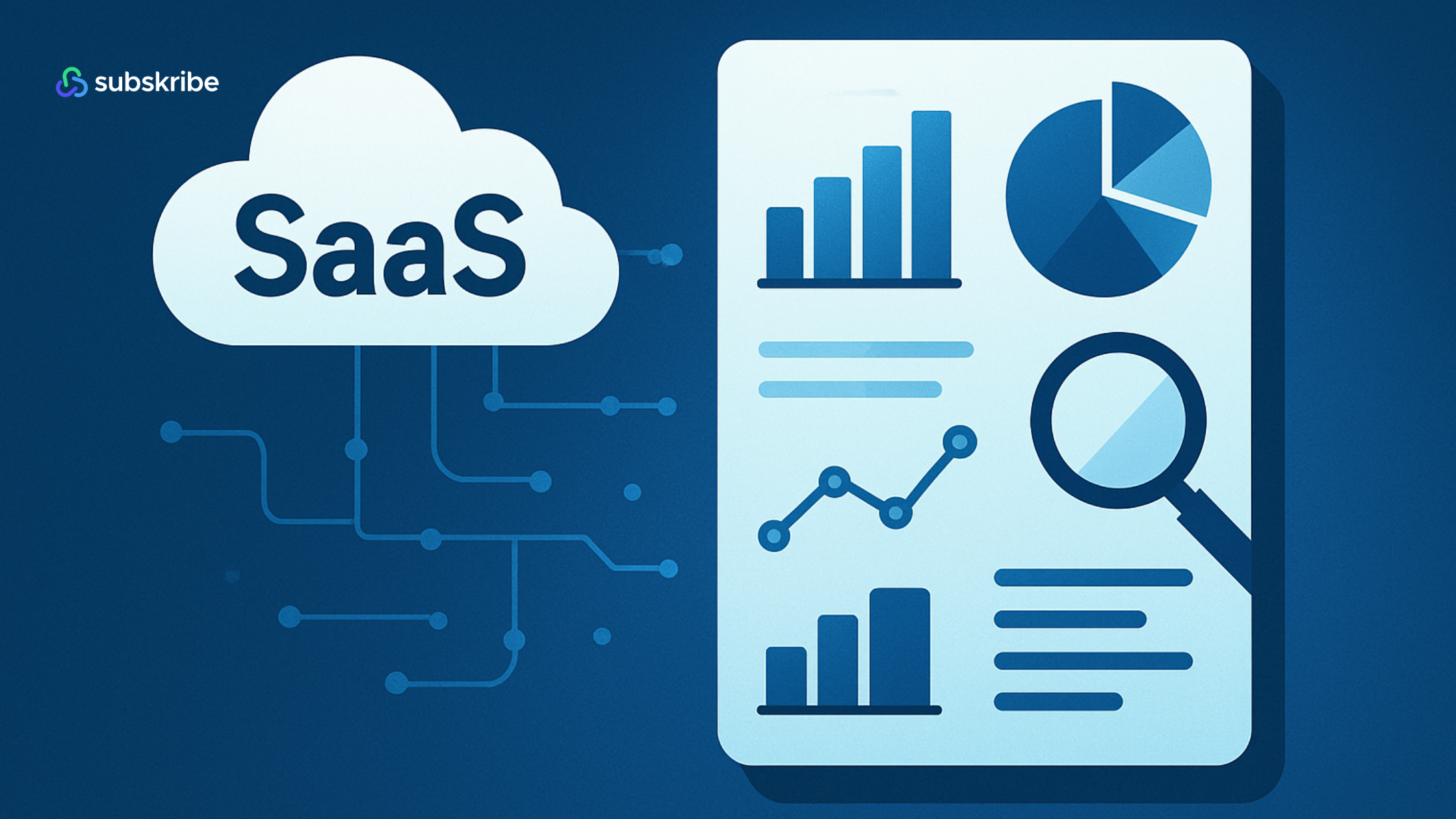Let's be honest - tracking the right metrics can make or break your enterprise SaaS business. With longer sales cycles, larger deals, and more complex customer relationships, enterprise SaaS companies require a distinct approach compared to their SMB counterparts.
If you're wondering which metrics actually matter (and which ones are just vanity numbers), you're in the right place. Here are the essential SaaS Metrics that'll give you real insights into your deal health and business trajectory.
Core Revenue Metrics
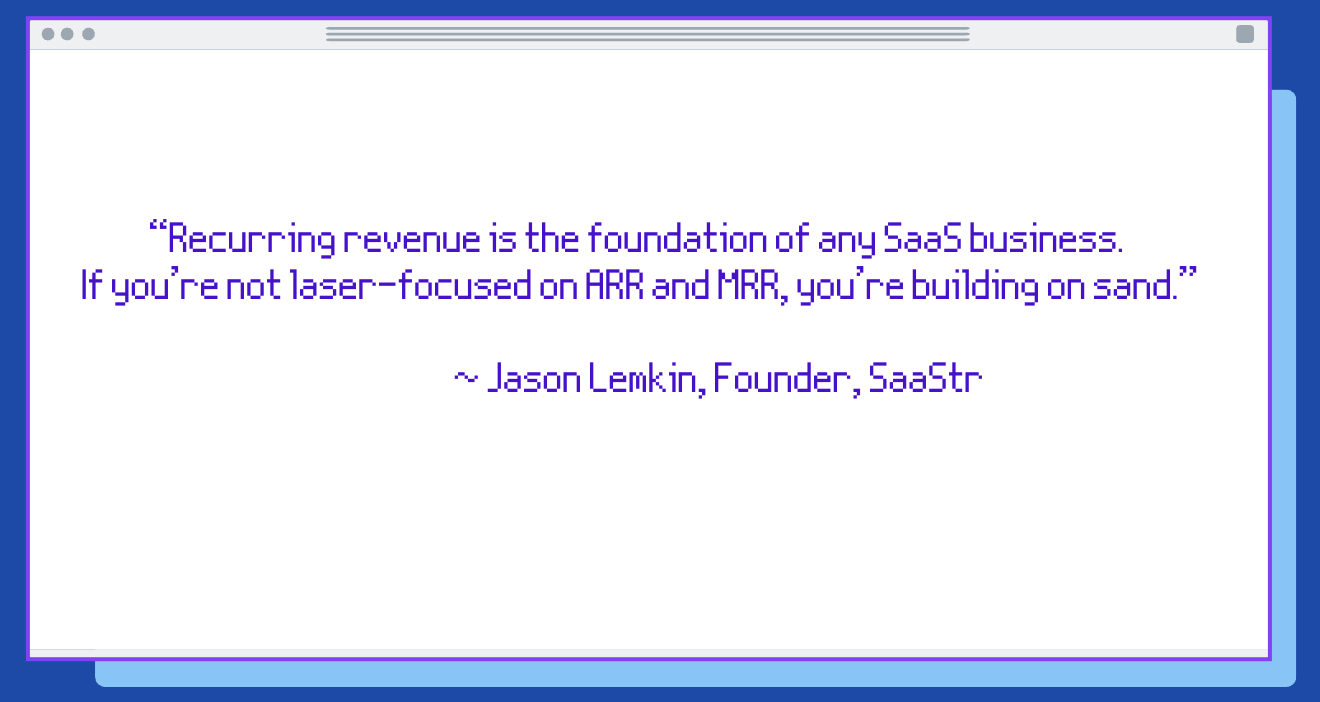
These are your bread and butter, the SaaS metrics that directly show how much money you're making and how fast you're growing.
1. Annual Recurring Revenue (ARR)
Definition: ARR represents the predictable revenue your SaaS business generates from subscriptions over 12 months. It's your north star metric for understanding business stability.
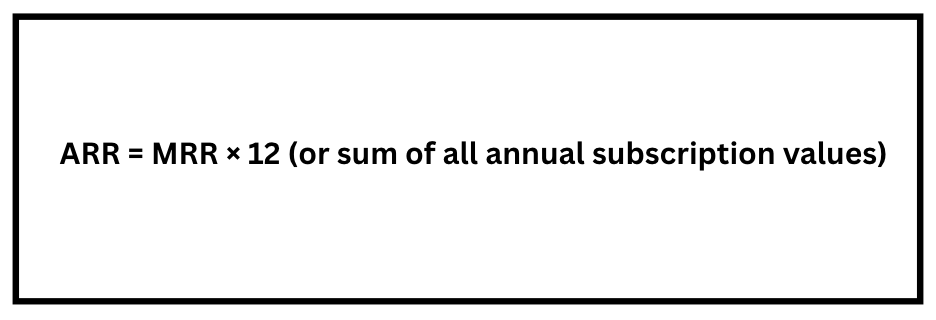
Example:
Imagine a SaaS company called Recurrflow, which sells AI-driven data analytics tools to enterprise teams. Recurrflow signs 15 enterprise clients this year. Each client is on an annual contract worth $80,000. That brings their total ARR to:
15 × $80,000 = $1.2 million
This figure gives Recurrflow a clear, predictable baseline to plan headcount, forecast revenue, and even approach investors with confidence.
Why it's important to Enterprise SaaS:
ARR provides predictable revenue visibility crucial for long-term planning, investor reporting, and valuation. Enterprise deals typically involve annual contracts, making ARR one of the most important SaaS metrics for strategic decisions.
Entry ARR
Definition: Entry ARR refers to the Annual Recurring Revenue booked at the time of initial contract signing. It captures the starting value of a customer’s contract and is a baseline for measuring future expansion or contraction.
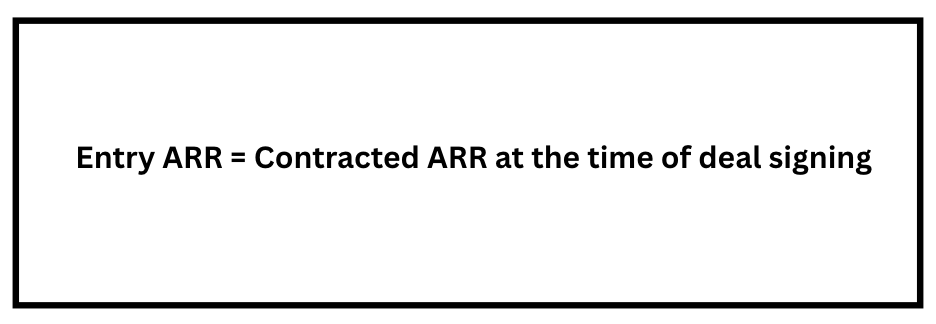
Example:
Let’s say Recurrflow, our fictional SaaS company, lands a new customer: a mid-size fintech firm that signs an annual contract starting at $96,000. That initial contract value becomes the Entry ARR for this customer. A year from now, if the same customer expands usage or upgrades features, the ARR might increase, but that first $96,000 remains the benchmark for measuring growth from day one.
Why it’s important to Enterprise SaaS:
Entry ARR gives you a clean snapshot of the initial value each new customer brings in. For enterprise SaaS businesses with complex, multi-phase deals, it helps isolate new logo performance and assess sales effectiveness at acquisition. Tracking Entry ARR also sets the foundation for measuring expansion over time, key for evaluating land-and-expand strategies.
Exit ARR
Definition: Exit ARR is the Annual Recurring Revenue at the end of a specific period, reflecting the current value of all active subscriptions after accounting for new sales, renewals, expansions, downgrades, and churn.
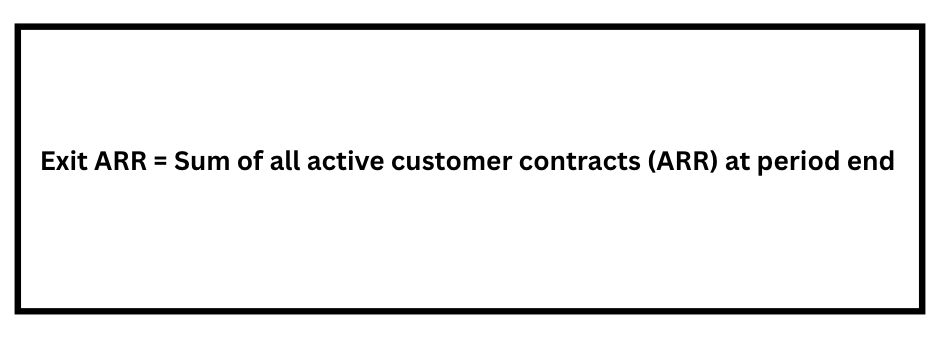
Example:
At the close of Q4, Recurrflow, an enterprise SaaS provider, reviews its book of business. Over the years, they signed several new enterprise contracts, expanded deals with key accounts, and had a couple of churned customers. After accounting for all active annual contracts at year-end, including new, renewed, and expanded deals, the total ARR stands at $2.4 million. This figure represents their Exit ARR, a clear snapshot of the company’s recurring revenue going into the next fiscal year.
Why it’s important to Enterprise SaaS:
Exit ARR shows your company’s actual revenue run rate after all activity in a given period, making it one of the clearest indicators of growth or decline. For enterprise SaaS, where upsells and contract changes are common, Exit ARR helps track expansion impact and renewal success. Comparing it against Entry ARR helps visualize true net growth.
Average ARR
Definition: Average ARR measures the average Annual Recurring Revenue per customer, giving insight into the typical contract value across your customer base. It’s useful for understanding deal size trends, segmenting customer value, and informing pricing strategies.
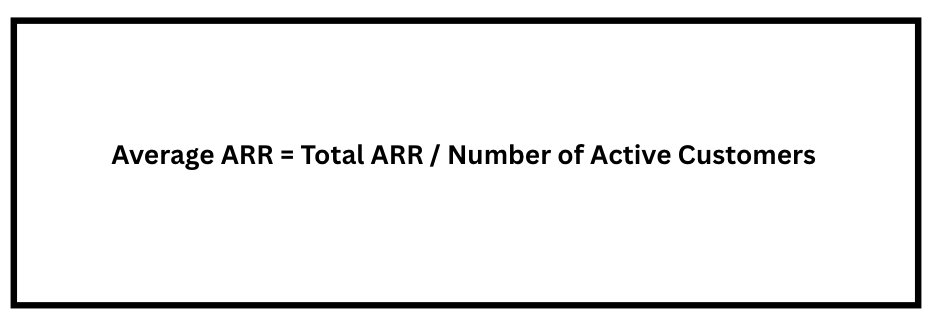
Example:
Recurrflow, an enterprise SaaS company, serves 40 active customers, each on annual contracts. After reviewing their contracts, the finance team finds that the total ARR is $4 million. To understand the typical deal size across their customer base, they calculate:
$4,000,000 ÷ 40 = $100,000
This $100,000 is their Average ARR, helping them benchmark deal quality, segment customer tiers, and set smarter sales targets.
Why it’s important to Enterprise SaaS:
For enterprise SaaS companies, Average ARR helps you gauge the quality of your customer base and the effectiveness of your sales strategy. A rising average may indicate success with larger deals or enterprise accounts, while a decline could suggest a shift toward smaller or lower-value customers. It’s also useful for benchmarking and planning quota targets for sales teams.
2. ARR Growth Rate
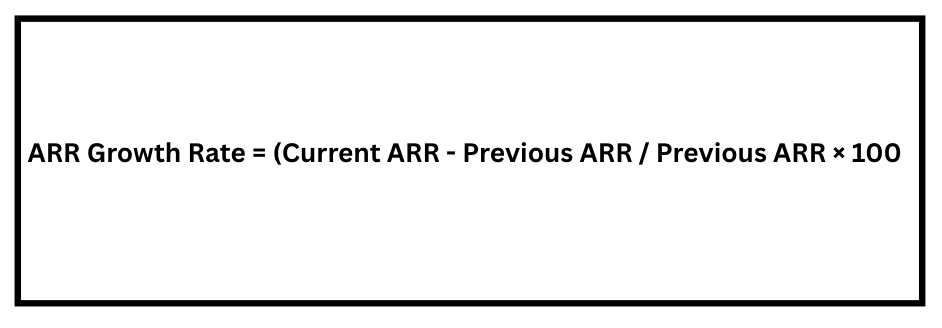
Example:
At the start of the year, Recurrflow had an ARR of $3 million. Over the next 12 months, they closed several large enterprise deals and expanded existing contracts, ending the year with an ARR of $4.2 million.
To calculate their ARR Growth Rate:
= (4.2M - 3M) / 3M × 100
= 40%
This 40% ARR growth shows that Recurrflow is scaling well, signaling strong sales performance and growing customer demand, essential insights for forecasting and strategic planning.
Why it’s important to Enterprise SaaS:
ARR Growth Rate reflects the long-term health and scalability of your business. For enterprise SaaS companies with large, multi-year contracts, steady ARR growth shows strong customer acquisition, expansion, and retention momentum. A slowdown may indicate issues in pipeline velocity, pricing, or renewals, making it a critical metric for strategic forecasting and investor confidence.
3. Annual Contract Value (ACV)
Definition: ACV represents the average annual value of your customer contracts, normalized to 12 months regardless of contract length.

Example:
Recurrflow signs a new enterprise customer to a 3-year contract worth $300,000 in total. To understand the annual value of this deal, they calculate the Annual Contract Value (ACV) using the formula:
ACV = Total Contract Value / Contract Length in Years
= $300,000 / 3
= $100,000
This $100,000 ACV helps Recurrflow assess deal quality, forecast revenue on an annual basis, and set sales targets that align with the long-term value of their contracts.
Why it's important to Enterprise SaaS:
Higher ACV typically means better unit economics and more predictable cash flow. It also indicates successful upmarket movement and helps benchmark against competitors.
4. Total Contract Value (TCV)
Definition: TCV captures the total value of a contract over its entire lifetime, including all years and any committed expansion revenue.
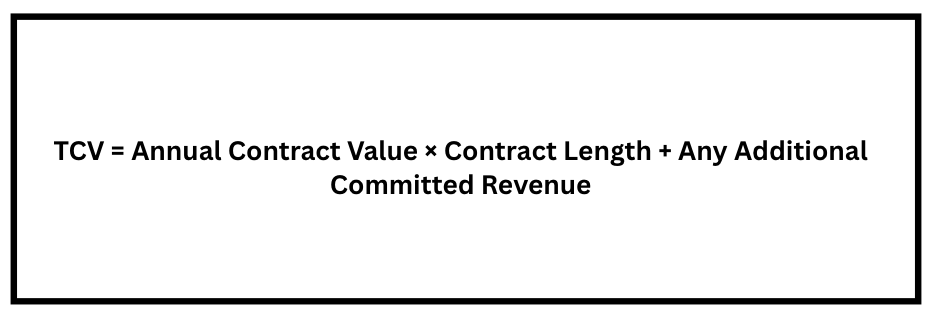
Example:
Recurrflow signs a 3-year deal with a large healthcare tech client. The Annual Contract Value (ACV) is $120,000, and the client has also committed to a one-time $30,000 onboarding and integration fee.
Using the formula:
TCV = ACV × Contract Length + Additional Committed Revenue
= $120,000 × 3 + $30,000
= $390,000
Why it's important to Enterprise SaaS:
TCV is crucial for cash flow forecasting and understanding the long-term impact of deals. It's particularly important for multi-year enterprise agreements common in the space.
Customer Retention & Expansion Metrics
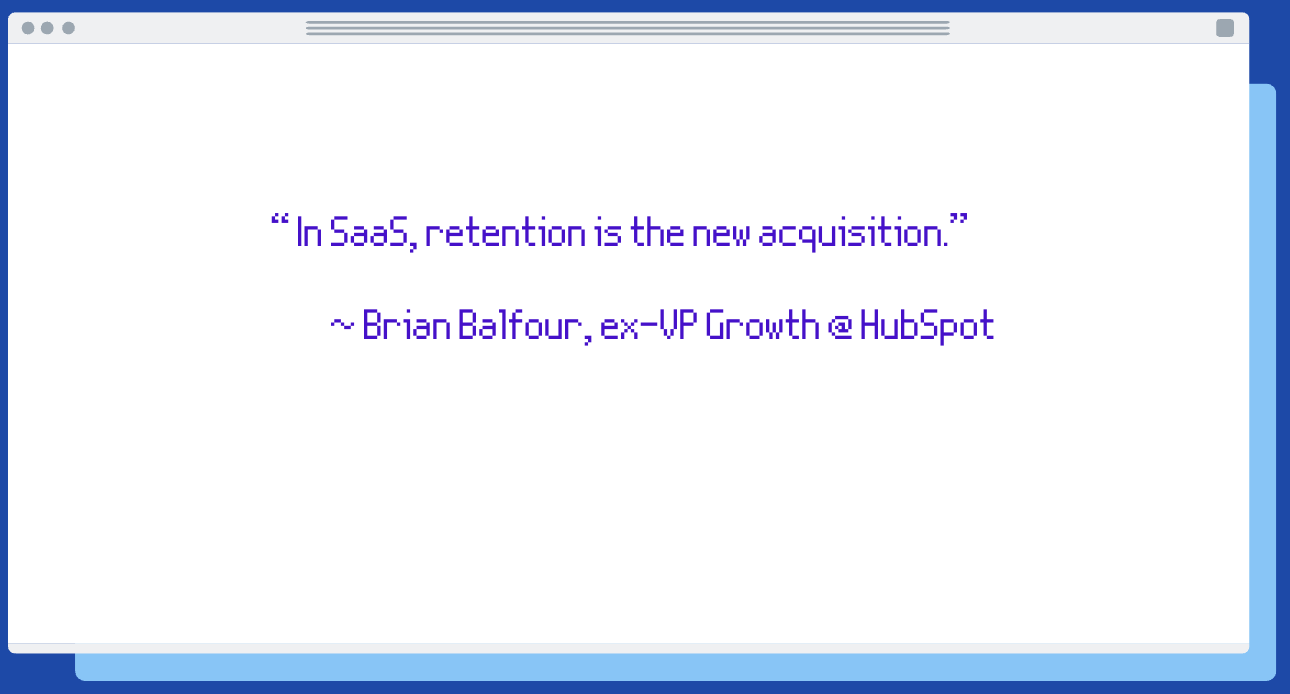
These metrics tell you how well you're keeping customers happy and growing revenue from existing accounts - arguably more important than acquiring new ones!
5. Customer/Logo Churn Rate
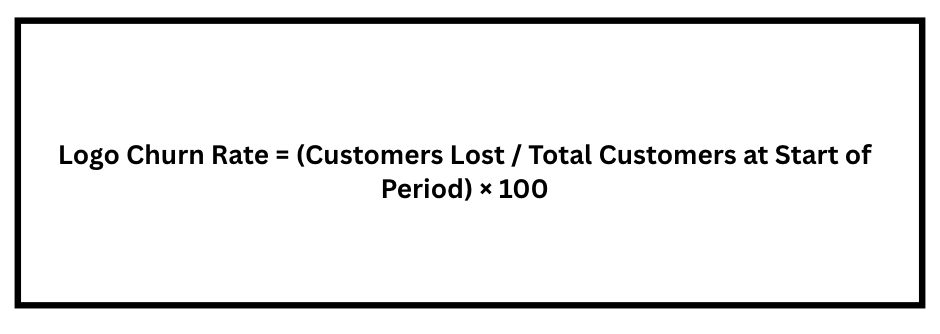
Example:
At the beginning of the year, Recurrflow had 100 enterprise customers. By year-end, they lost 5 customers due to contract non-renewals.
Using the formula:
Logo Churn Rate = (Customers Lost / Total Customers at Start of Period) × 100
= (5 / 100) × 100
= 5%
This 5% logo churn rate enables Recurrflow to gauge its customer retention performance. Even with growing revenue, a rising churn rate could signal dissatisfaction or poor product-market fit among specific segments, making it a critical metric for account and success teams to track.
Why it's important to Enterprise SaaS:
Enterprise customers represent a significant investment in sales and onboarding. Low logo churn (ideally under 10% annually) indicates strong product-market fit and customer satisfaction.
6. Revenue Churn
Definition: Revenue churn shows the percentage of recurring revenue lost from existing customers due to cancellations and downgrades.

Example:
At the beginning of the year, Recurrflow had an ARR of $5 million. Over the year, they lost $400,000 in ARR due to customer cancellations and an additional $100,000 from contract downgrades.
Using the formula:
Revenue Churn = (ARR Lost from Churn + ARR Lost from Downgrades) / ARR at Start of Period × 100
= ($400,000 + $100,000) / $5,000,000 × 100
= 10%
This 10% revenue churn rate shows how much predictable income Recurrflow lost, regardless of customer count. It's a key metric for understanding the financial impact of churn, especially when large enterprise contracts are involved.
Why it's important to Enterprise SaaS:
Revenue churn provides a clearer financial picture than logo churn since enterprise customers have varying contract values. It directly impacts your bottom line and growth trajectory.
7. Net Revenue Retention (NRR)

Example:
Recurrflow started the year with $4 million in ARR. During the year, they gained $800,000 in expansion ARR from upsells and cross-sells, but lost $300,000 in ARR due to customer churn and downgrades.
NRR = (Starting ARR + Expansion ARR – Churned ARR) / Starting ARR × 100
= ($4,000,000 + $800,000 – $300,000) / $4,000,000 × 100
= 112.5%
This 112.5% NRR means that even after accounting for churn, Recurrflow grew revenue from its existing customer base, a strong signal of product value, customer satisfaction, and efficient expansion strategy.
Why it's important to Enterprise SaaS:
NRR above 100% means you're growing revenue from existing customers faster than you're losing it. Top enterprise SaaS companies achieve 110-130% NRR, making it a key SaaS metric for investors and strategic planning.
8. Gross Revenue Retention (GRR)
Definition: GRR shows how much recurring revenue you retain from existing customers, excluding any expansion revenue – it's a pure measure of churn prevention.

Example:
Recurrflow began the year with $6 million in ARR. Over the year, they lost $400,000 due to customer churn and $200,000 from contract downgrades. No expansion revenue is included in GRR.
GRR = (Starting ARR – Churned ARR – Downgraded ARR) / Starting ARR × 100
= ($6,000,000 – $400,000 – $200,000) / $6,000,000 × 100
= 90%
This 90% GRR tells Recurrflow how much recurring revenue they retained from existing customers, excluding upsells or expansions, making it a true measure of baseline retention and overall customer satisfaction.
Why it's important to Enterprise SaaS:
GRR isolates your ability to prevent churn and downgrades. Enterprise SaaS companies typically aim for 90%+ GRR, as it indicates strong customer satisfaction and product stickiness.
Deal Economics & Pricing Metrics

These metrics help you understand the efficiency and profitability of your sales process.
9. Sales Velocity
Definition: Sales velocity measures how quickly deals move through your pipeline and convert to revenue, showing the efficiency of your sales process.
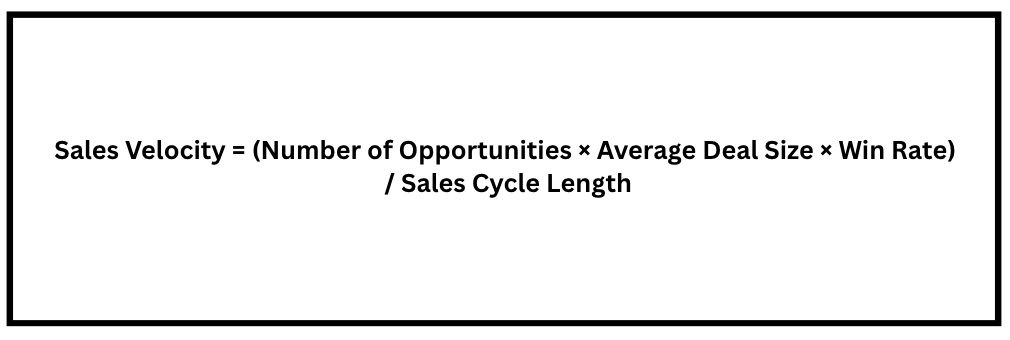
Example:
Recurrflow’s enterprise sales team is working with 40 qualified opportunities this quarter. Their average deal size is $120,000, their win rate is 25%, and their average sales cycle is 60 days.
Using the formula:
Sales Velocity = (Number of Opportunities × Average Deal Size × Win Rate) / Sales Cycle Length
= (40 × $120,000 × 0.25) / 60
= $1,200,000 / 60
= $20,000 per day
This means Recurrflow is generating $20,000 in new pipeline value per day. For enterprise SaaS companies, sales velocity helps assess how efficiently large deals are moving through the funnel and where bottlenecks may be slowing growth.
Why it's important to Enterprise SaaS:
Sales velocity helps optimize your sales process and forecast revenue. Longer enterprise sales cycles make this metric crucial for cash flow planning and sales team performance evaluation. It's one of the most practical SaaS metrics for operational improvement.
10. Average Deal Size / Average Selling Price
Definition: This metric tracks the average value of your closed deals over a specific period, indicating your market positioning and sales effectiveness.
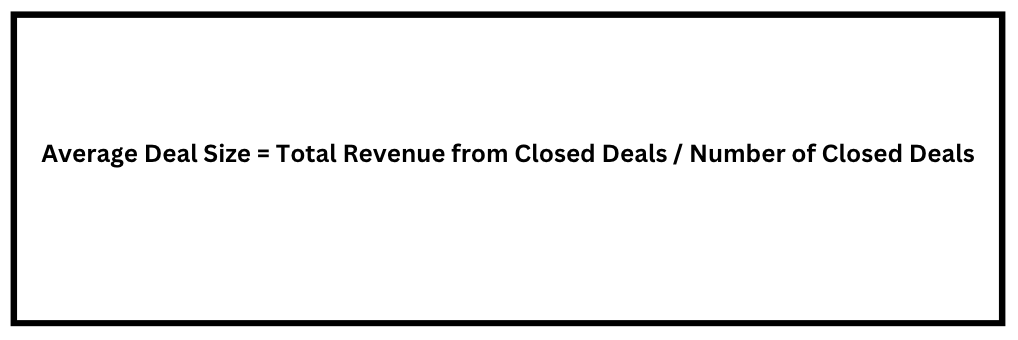
Example:
In Q2, Recurrflow closed 10 enterprise deals, bringing in a total of $1.5 million in revenue from those contracts.
Average Deal Size = Total Revenue from Closed Deals / Number of Closed Deals
= $1,500,000 / 10
= $150,000
This means Recurrflow’s average enterprise contract was $150,000 for the quarter. For enterprise SaaS businesses, tracking ASP helps sales and finance teams understand deal dynamics, pricing effectiveness, and how well the product is being packaged for high-value buyers.
Why it's important to Enterprise SaaS:
Increasing average deal size often indicates better product-market fit and more effective sales positioning. It's also crucial for understanding your total addressable market and sales capacity planning.
SaaS metrics are more than just numbers - they’re decision-making power tools. When used right, they help you navigate complex choices with clarity and confidence. Whether you're fine-tuning your pricing strategy, cutting down churn, or improving trial-to-customer conversions, these metrics offer the visibility you need to take the right next step, backed by real data. Of course, tracking these metrics manually can be time-consuming and error-prone, especially when dealing with complex enterprise pricing models and subscription variations.
Let Subskribe Power Your SaaS Metrics Engine
With AI-powered CPQ, Billing, Revenue recognition, and Advanced Analytics of SaaS metrics dashboards, Subskribe helps enterprise SaaS companies track these critical metrics effortlessly while ensuring accurate billing and revenue reporting. When you're focused on growing your business, the last thing you want is to spend hours calculating NRR or chasing down revenue churn data. Let Subskribe handle the heavy lifting so you can focus on what these metrics are telling you about your growth path.

